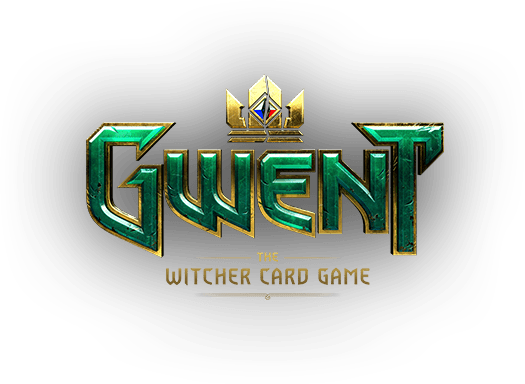
How to Play Gwent: A Step-by-Step Guide for Beginners
- by Edwin K Brown
- Posted on 2023-07-17
The aim of this article is to introduce you to the fundamental rules and card mechanics of the game. You will learn about rows, different card types, keywords, and various other factors that make playing Gwent a truly unique experience. By the end, you will have the knowledge and understanding to play Gwent and progress to more advanced content available in our other courses.
Now, we will provide an overview of the game basics and the key mechanics you should keep in mind when you take your first steps into the world of Gwent. Don’t be intimidated; Gwent differs significantly from other collectible card games you may be familiar with. Although there are several intricate details to master, the core game mechanics can be easily grasped.
Round Structure
Gwent features a distinctive round structure:
- Every match comprises three separate rounds;
- To win the match, you need to emerge victorious in two of the rounds;
- To win a round, players take turns playing cards onto the battlefield. These cards have point values and may possess special effects. It’s important to note that only one card can be played per turn;
- At the end of a round, the players’ points are tallied, and the player with the highest score on the board wins the round;
- Each round continues until both players pass or there are no more cards to play.
Round Commitment and Passing
One of the most crucial decisions to make in Gwent is when to pass a round and when to push further. This decision is particularly significant due to Gwent’s second unique mechanic: its card draw system.
- Initially, the player starts with a hand of ten cards and does not draw any additional cards until they complete a round. Once the round ends, they draw three more cards, reaching the hand limit of ten;
- Overdrawn cards between rounds are converted into extra mulligans, which are additional opportunities to redraw cards. In the first round, the player going first receives three mulligans, while the other player receives two. In subsequent rounds, both players have two mulligans;
- Since the number of card draws is limited, each card becomes extremely valuable. Committing too many powerful cards in a round can easily lead to defeat, as your opponent may have a stronger hand in the final decisive round, or they may simply possess more cards overall.
Playing a card does not consume additional resources; during your turn, you are free to play any card you desire. The game revolves around reacting to your opponent’s strategy by considering the varying point values and individual effects of the cards. Determining whether to play a card early or save it for a later round is a challenging yet enjoyable decision and an integral aspect of Gwent’s core gameplay.
Provisions
Deck building in Gwent follows a nontraditional approach. The game utilizes a resource called provisions. Each card has a specific provision value. When constructing your deck, you have a limited pool of provisions available, which totals 150 provisions plus the provisions provided by your chosen leader ability (explained below).
It’s important to remember that deckbuilding isn’t about including only the most powerful cards in your deck. Instead, it involves combining high- and low-provision cards strategically to maximize their synergistic abilities and generate the highest number of points possible.

Factions and Leader Abilities
Gwent consists of six factions: Monsters, Nilfgaard, Northern Realms, Scoia’tael, Skellige, and Syndicate. Each faction has its own unique set of cards and archetypes. Additionally, there is a pool of Neutral cards that can be used in any faction.
Every faction possesses distinctive leader abilities, and when building your deck, you must choose one ability to accompany it. Leader abilities can be activated during your turn and can either provide a powerful singular move that grants additional points at a crucial moment or support your deck’s strategy periodically. As mentioned earlier, the leader ability you select determines the maximum number of provisions you can allocate to your deck.
Economy
While you can acquire cards by purchasing card kegs from the in-game shop or by crafting them individually using “scraps,” you will also earn a substantial number of cards simply by playing the game.
- Login rewards, daily quests, seasonal reward trees, and ladder rank-ups offer a steady influx of cards, kegs, and resources to help expand your collection gradually;
- Compared to other games, Gwent is notably generous with its reward distribution, allowing you to strive for a competitive edge without the need to spend excessive amounts of money;
- When opening a card keg, you receive five cards and can select one card out of three options for your fifth card;
- This feature significantly reduces the likelihood of receiving duplicate cards and expedites the growth of your collection.
If you wish to support the developers, you have the option to purchase cosmetic collectibles such as card backs, game boards, leader skins, avatars, and animated premium card arts. These items have no impact on gameplay and are purely aesthetic.
Summary
The key takeaway from this lesson is that while Gwent’s gameplay may differ fundamentally from other collectible card games due to its round structure and card draw system, it offers a rewarding, intuitive, and exhilarating experience. Mastering the intricacies of Gwent is both challenging and enjoyable! In the next lesson, we will explore how your mindset needs to adapt when playing Gwent compared to other collectible card games. Stay tuned for more!
The aim of this article is to introduce you to the fundamental rules and card mechanics of the game. You will learn about rows, different card types, keywords, and various other factors that make playing Gwent a truly unique experience. By the end, you will have the knowledge and understanding to play Gwent and progress…